The iPhone 6 Review
by Joshua Ho, Brandon Chester, Chris Heinonen & Ryan Smith on September 30, 2014 8:01 AM EST- Posted in
- Smartphones
- Apple
- Mobile
- iPhone 6
GPU Performance
While we don't quite have real games to benchmark against, we do have benchmarks that are reasonably good approximations of games, which heavily stress the GPU. For the most part, this means that we can see the performance of the A8's PowerVR GX6450 GPU but there are some aspects that are CPU-bound, which we'll discuss after the results.
Edit: Before I get into the results, I must caution that Basemark X will have inaccurate on-screen results as the benchmark was made using XCode 5.x in order to keep scores comparable between versions 1.1 and 1.1.1. This doesn't affect the overall score, which is solely calculated based upon off-screen performance.
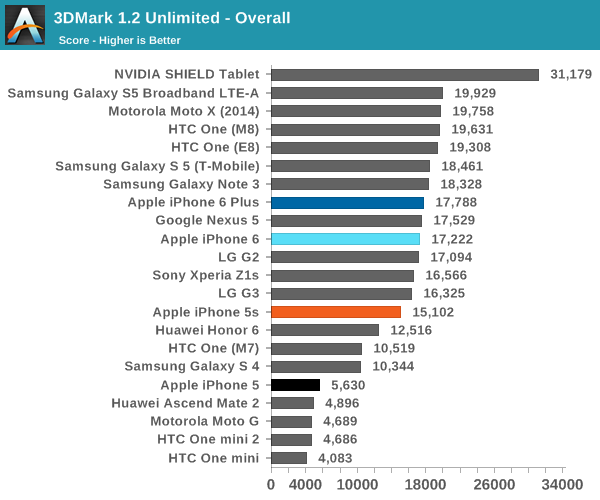
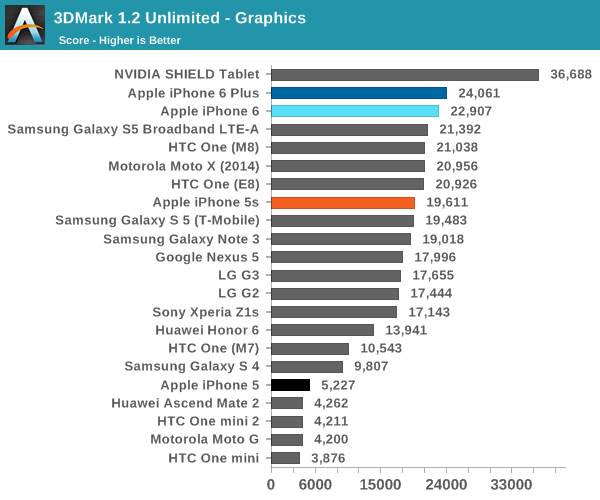
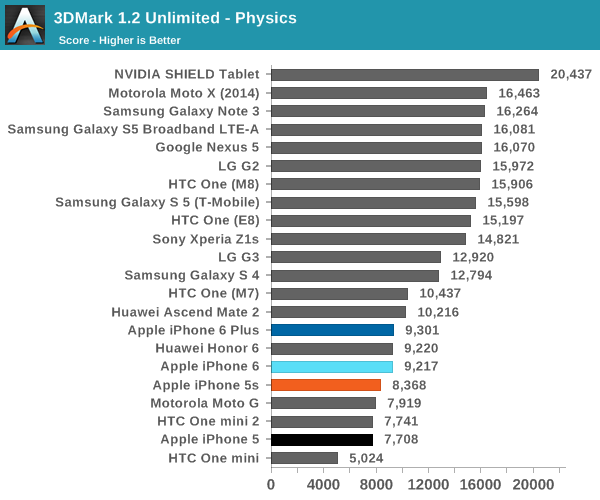
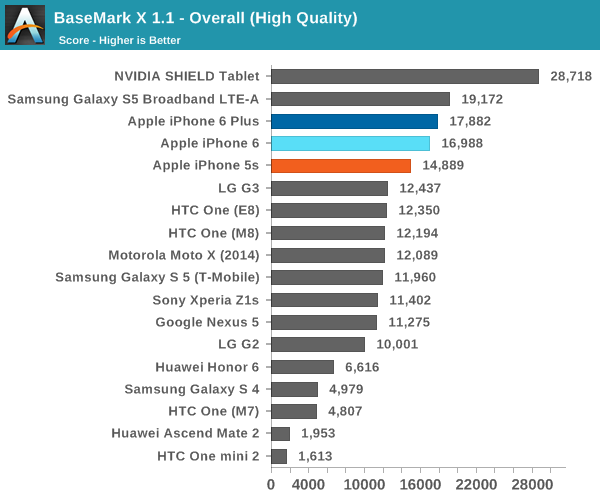

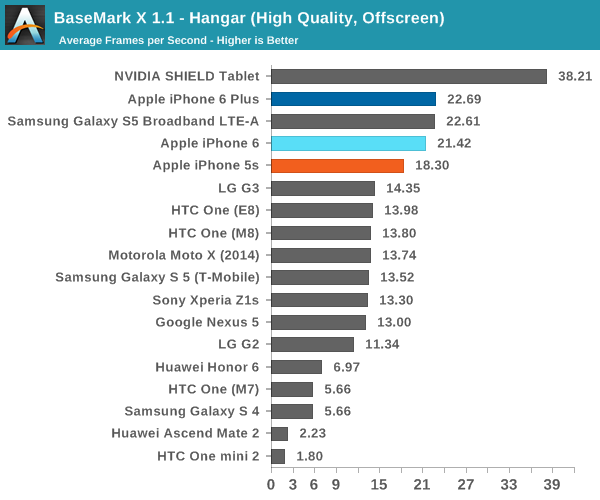

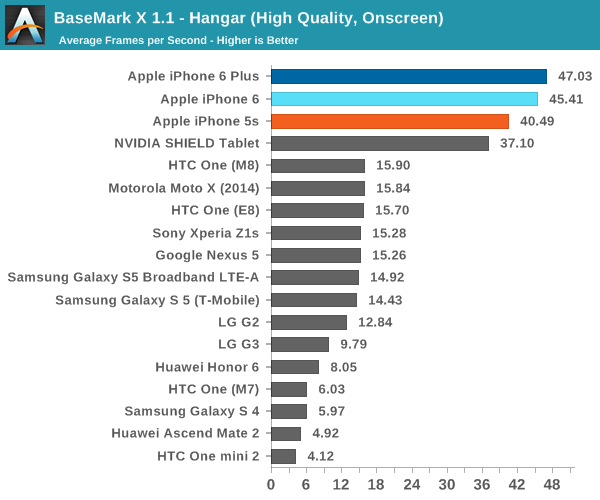
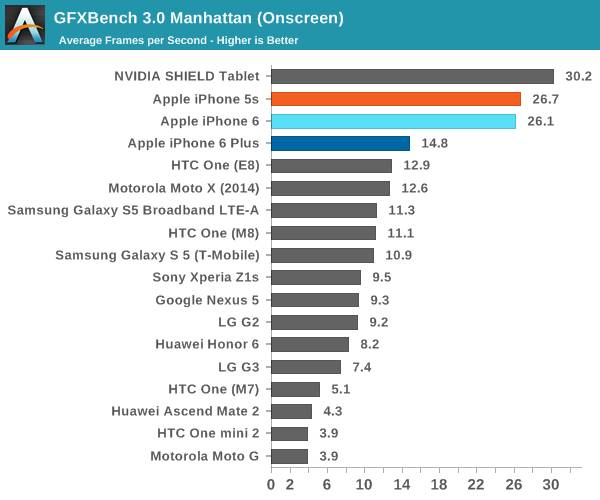


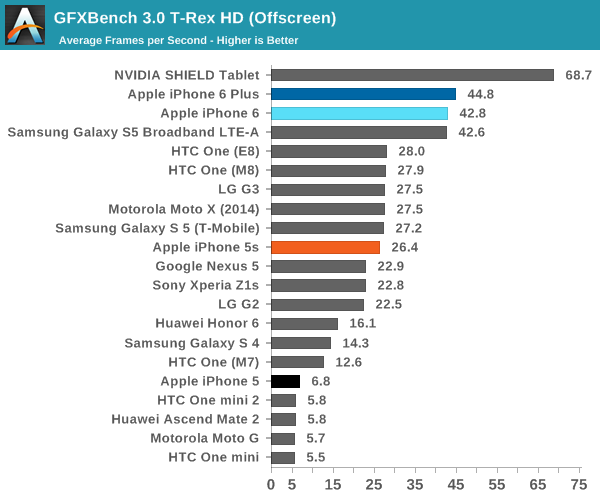
For the most part, we see that the GX6450 is at about the same level as Qualcomm's Adreno 420, which seems to track closely to expectations given that the A7's GPU was around the same performance as the Adreno 330. The 3DMark test does have an interesting result, but it seems that this is because 3DMark's physics test has a strong amount of data dependency that restricts the level of out of order execution that can be done. NVIDIA's Tegra K1 is the current leader in graphics performance, but of course it's also in a tablet instead of a smartphone so it's not a direct competitor.
NAND Performance
As we move towards the goal of seamless performance in everyday tasks, one significant factor is IO performance. While there's definitely a minimum level of performance that allows for generally acceptable smoothness, there's value in having higher storage performance (e.g. prevent bottlenecking in situations such as updating apps in the background). In order to test this, we use Androbench with some custom settings on Android and a custom utility developed by Eric Patno for iOS, who has been quite helpful with furthering our efforts to test storage performance.
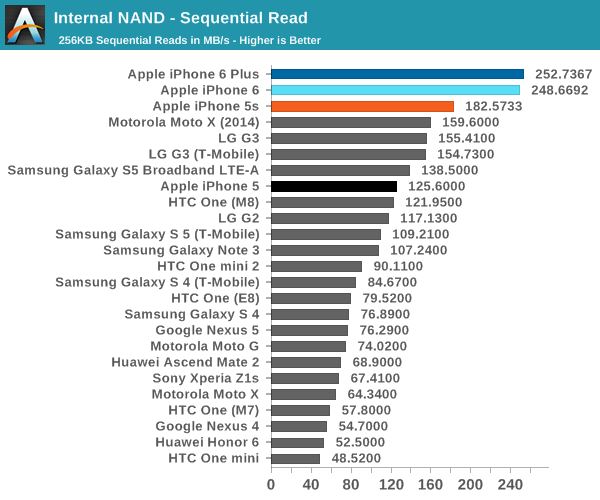
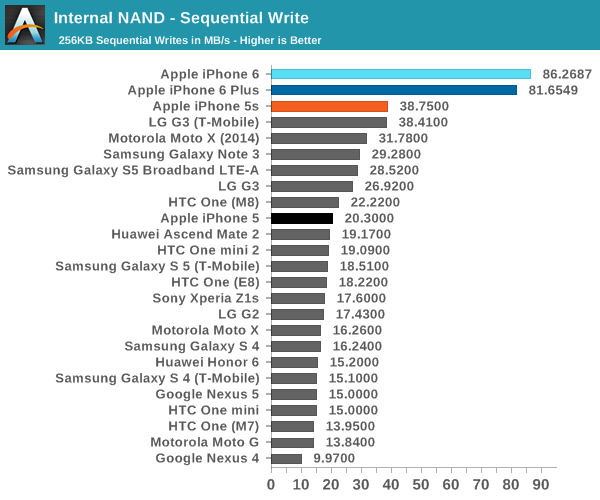
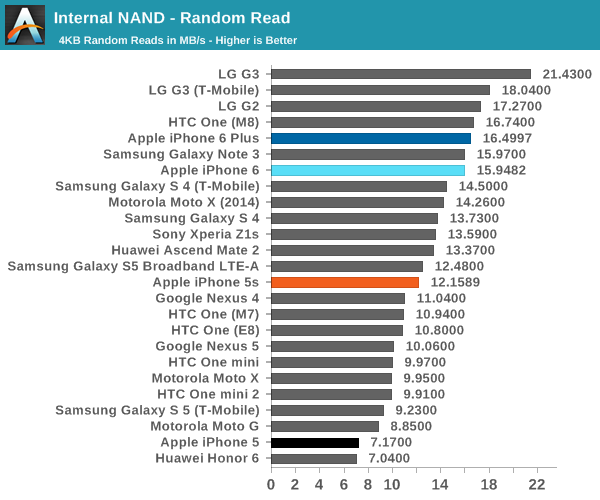
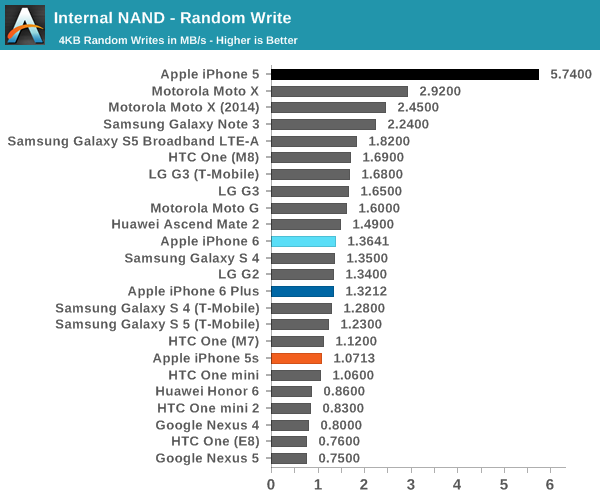
As this is the first time that we've looked into NAND performance on iOS devices, it's definitely worth scrutinizing the data a bit more closely than in most cases. There are a few notable cases here, which are the class-leading speeds for sequential reads and writes on the iPhone 6, but also the rather middling random read and write speeds for the iPhone 6 and 5s. The oddest result is definitely the iPhone 5, which is Ryan's personal unit and while the random read speeds are on the low side, random write speeds are easily record-setting.
In practice, with tablets and smartphones being less multitasking heavy than PCs/laptops, the sequential scores are probably slightly more relevant to the overall user experience. The iPhone 6 results show a significant increase in performance over the iPhone 5s in all of the tests, which is always good to see.










531 Comments
View All Comments
Toss3 - Wednesday, October 8, 2014 - link
Just because some people question the integrity of a website claiming to do objective measurements of a device's performance, doesn't mean that they are idiots. Quite the opposite in fact. It would be great if Anand changed the way they do their battery measurements (they do not reflect reality, and aren't comparable to other sites' results (should already be enough for them to question the way they do it)), and also dropped the browser benchmarks from the CPU performance section (browser performance != cpu performance, unless both phones are running the exact same version of the browser on the same platform (we know that chrome on iOS isn't the same as Chrome on android etc.)). And measuring the display brightness when setting the brightness manually also isn't ideal, as Samsung limits the peak brightness on their devices for those occasions, which means that the true peak is a lot higher (setting the brightness to automatic solves this issue(think quite a few people prefer auto to manual)).Toss3 - Wednesday, October 8, 2014 - link
Forgot to add that it would be great if they included a reference for the photo and video comparisons (D800 + color correction). There's also a big discrepancy between the time the photos were taken (around 8pm for all androids and 10pm for the iPhones (why is that?)).tralalalalalala40 - Wednesday, October 8, 2014 - link
To make it harder for the iphones under lower lighting to make the test more fair to droid phones.Toss3 - Thursday, October 9, 2014 - link
Lighting conditions should always be equal for all devices, and sometimes 10pm can be brighter than 8pm.tralalalalalala40 - Wednesday, October 8, 2014 - link
Samsung has to limit the brightness or else the pentile pixels will burn out quickly...How should they do the battery measurements? Apple has the most efficient SOCs and are destroying default QComm chips everyone is using.
Toss3 - Thursday, October 9, 2014 - link
Automatic brightness and normal usage would be best (playing a game for 2h - calling someone for 1h - browsing the web for 1h - installing 30apps, etc.). Being on both wifi and lte throughout the day.Toss3 - Thursday, October 9, 2014 - link
And the Exynos 5433 would like to disagree - currently on the launch firmware and already outscoring everything else (Geekbench scores over 1300/4300 and gfxbenchmark/sunspider numbers that match those of the iPhone 6). The 3DMark numbers are also higher than those of the iPhone 6.taehoon - Wednesday, October 8, 2014 - link
I want to know iphone6/6+ NAND performance test is based on 64 or 128GB.Because It is extremely higher than any other devices
Toss3 - Wednesday, October 8, 2014 - link
Why are you still running browser benchmarks when testing the CPU? You'd think that a site like Anandtech would know better (the difference between Samsung's own browser and Chrome is huge http://forum.xda-developers.com/showpost.php?p=557... How about running something like 3D Mark's physics benchmark instead? Basemark is a lot better than browser-based ones, but do we know if the benchmark performs equally on both platforms.tralalalalalala40 - Wednesday, October 8, 2014 - link
People commonly use the web browser on the device to browse the internet with their phone. Their other tests cover the 3D physics (which the iphone doesn't excel at, since most if the users of this phone aren't simulating physics problems).iPhone 6 is destroying the competition at the moment, samsung just dropped 10% in profits, they have to go back to making RAM, this might be their last high end phone release on android, they need to move to tizen.